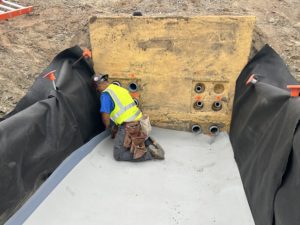 Methane is just one carbon with four hydrogen atoms, yet this simple compound complicates life. It is a powerful greenhouse gas. Greenhouse gases trap heat in our atmosphere. Some familiar sources of methane are landfills, oil, livestock, and coal. Ever since humans started to burn coal and tap into fossil fuels, the exponential use of these resources has depleted environments. The International Methane Emissions Observatory recognizes the complications of methane in our lives and tangibly identifies how to reduce the levels and interference in our environment.
Methane is just one carbon with four hydrogen atoms, yet this simple compound complicates life. It is a powerful greenhouse gas. Greenhouse gases trap heat in our atmosphere. Some familiar sources of methane are landfills, oil, livestock, and coal. Ever since humans started to burn coal and tap into fossil fuels, the exponential use of these resources has depleted environments. The International Methane Emissions Observatory recognizes the complications of methane in our lives and tangibly identifies how to reduce the levels and interference in our environment.
Global Alliance
The International Methane Emissions Observatory aims to reduce methane emissions globally in consistency with the Paris Agreement. Therefore they created a Global Methane Pledge, aligning 150 countries to reduce 30 percent by 2030 methane emissions. What they do is research, report, regulate, and apply information to benefit emission reduction.
Focus on Fuel

The primary axis to tackle this global issue is focusing on one of the sources of methane: burning fossil fuels. Back in 2021, the G20 Leaders’ summit settled that fossil fuels are to be the target for lowering emissions. To start action, the MARS program was established. Its abbreviation stands for Methane Alert Response System. Thus, they serve to detect, notify, act, and improve where methane is located. So, with this program and the methane emissions observatory research, it is tangible to measure and plan agreements to put in place for governments to follow.
Recognizing Roles

The International Methane Emissions views lowering emissions by deconstructing energy’s reliance on fossil fuels. So by researching renewable sources, humans can deter coal and fossil fuels. Understanding fossil fuels are the primary source for daily tasks like electricity, heat, power, transportation, and agriculture identifies factors to address. Therefore, identifying contributing sectors can be weighed. So that renewable energy sources can replace fossil fuel.
So, it’s critical to measure energy efficiency and improve upon systems. Additionally, part of this is making technology and digitalization more accessible. Analytics will be more accurate by having more cities and rural areas access tools to improve data, inform populations, and connections between usage. Thus, raising efficiency in measures to apply. This will lead to better operations, serving the public, and meeting the environment’s and people’s demands.
The future of reducing greenhouse gases accurately navigates by seeing where methane comes from. What it is made up of. How it plays a role in daily tasks. In October of 2022, At the International Petroleum Exhibitions Conference, it was reported that more than 80 oil and gas companies globally are actively measuring and reducing methane emissions. While this is an excellent step towards the Paris Agreement, it is just the beginning. As more is done to research, experiment, and market, the solutions for how energy roles are to operate shifts more into renewable energies.
